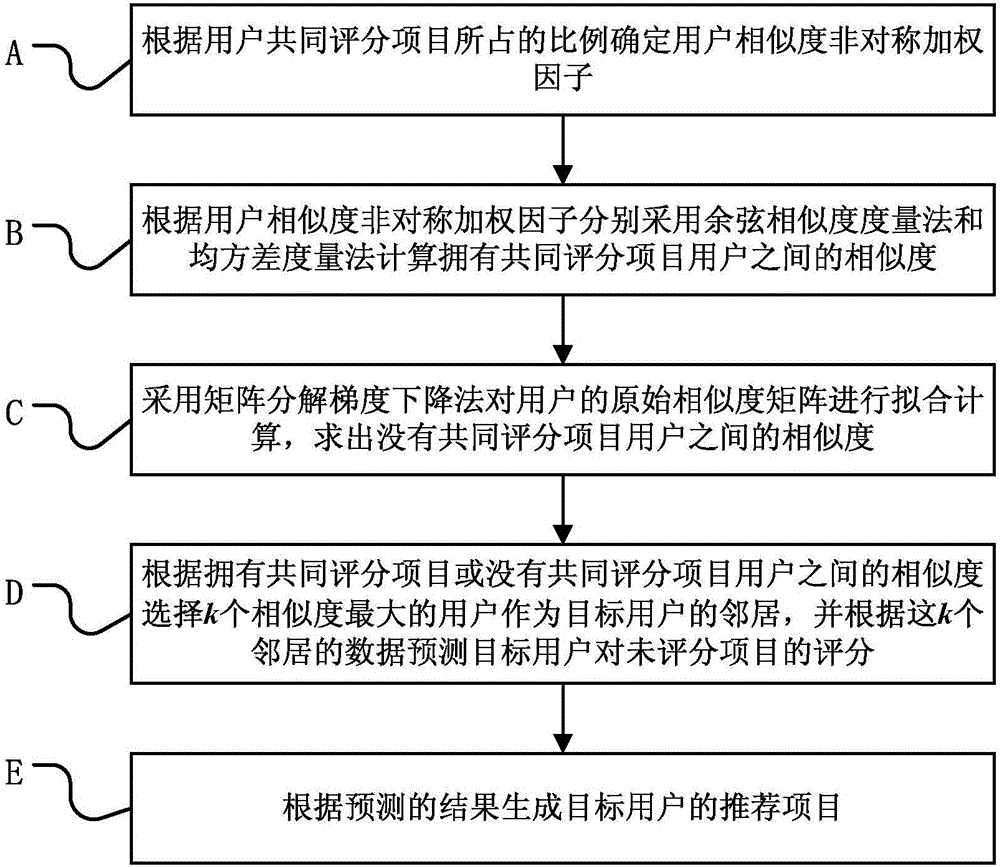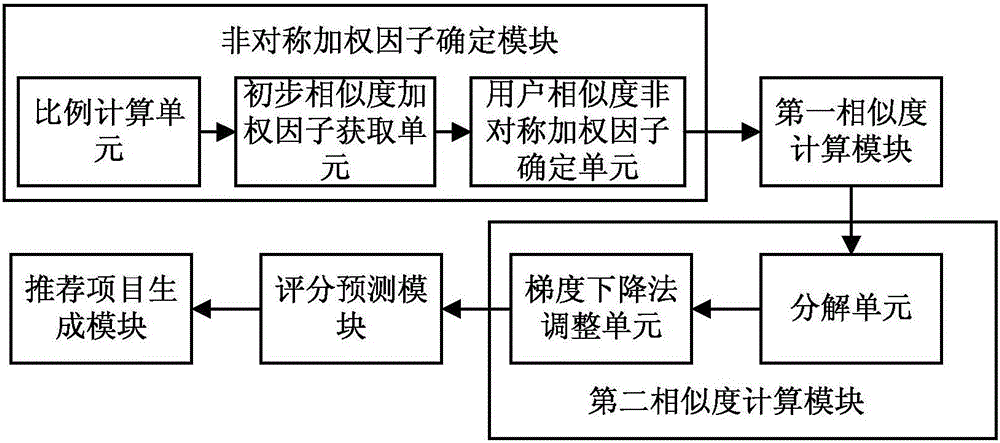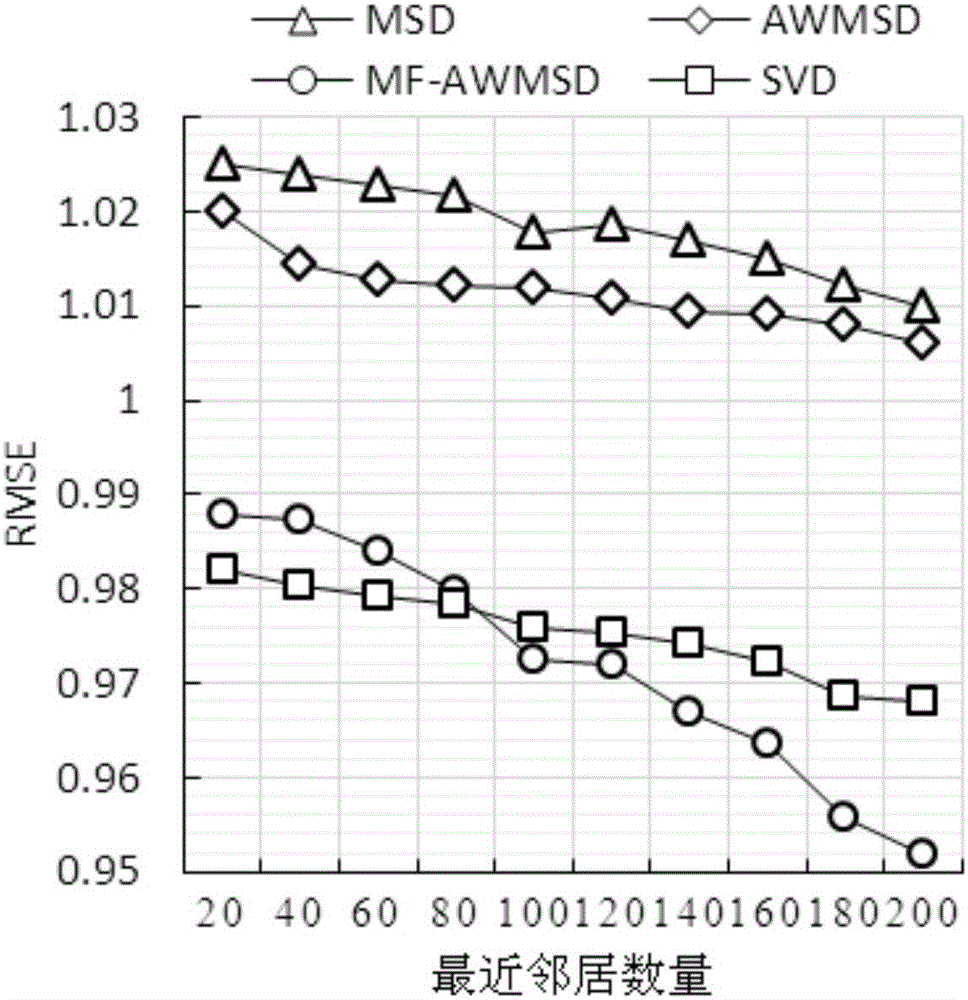Asymmetrical weighing similarity based collaborative filtering recommendation method and system
A collaborative filtering recommendation and weighted similarity technology, applied in the field of recommendation, can solve the problems of few rated items, misjudged user similarity, unable to guarantee the quality of recommendation when data is sparse or cold start.
- Summary
- Abstract
- Description
- Claims
- Application Information
AI Technical Summary
Problems solved by technology
Method used
Image
Examples
Embodiment 1
[0136] This embodiment explains and illustrates the relevant theories and implementation principles involved in the present invention.
[0137] (1) Traditional user similarity calculation method
[0138] There are three traditional calculation methods of user similarity: correlation coefficient, cosine similarity and mean square error. The present invention mainly uses cosine similarity and mean square error to design a similarity measurement model.
[0139] In a recommendation system, user rating data can be expressed as a user-item rating matrix R with m rows and n columns u , where m is the number of users and n is the number of items. Users and items are in sets U and T respectively.
[0140]
[0141] Element r at row h and column j h,j means user u h to item t j rating. The respective rating vectors of user u and user v are R u ={r u,1 ,r u,2 ,...,r u,n} and R v ={r v,1 ,r v,2 ,...,r v,n}, the mean value of the two scores can be obtained from the score v...
no. 2 example
[0182] The datasets used in this example are MovieLens and Douban. The two datasets contain 100,000 and 116,221 rating records respectively. The rating range is between 1 and 5. The higher the rating value, the more the user likes the item. The scoring data is randomly divided into two disjoint sets: the training set and the test set, accounting for 80% and 20% respectively. Each similarity measure method uses the training set to predict unknown score values, and the test set is used to evaluate the prediction accuracy of each method.
[0183] In order to evaluate the prediction accuracy rate of proposed method, the present invention adopts two kinds of commonly used indexes: Root Mean Square Error (RMSE) and Mean Absolute Error (MAE), calculation formula is as follows:
[0184] R A S E = 1 M Σ u ...
PUM
 Login to View More
Login to View More Abstract
Description
Claims
Application Information
 Login to View More
Login to View More - R&D
- Intellectual Property
- Life Sciences
- Materials
- Tech Scout
- Unparalleled Data Quality
- Higher Quality Content
- 60% Fewer Hallucinations
Browse by: Latest US Patents, China's latest patents, Technical Efficacy Thesaurus, Application Domain, Technology Topic, Popular Technical Reports.
© 2025 PatSnap. All rights reserved.Legal|Privacy policy|Modern Slavery Act Transparency Statement|Sitemap|About US| Contact US: help@patsnap.com



